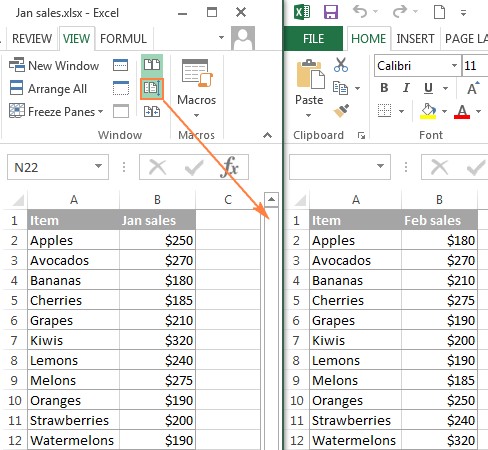Comparing data across two Excel worksheets is a common task for many professionals. Whether you’re tracking sales figures, analyzing student performance, or managing inventory, identifying differences and similarities between datasets is crucial for informed decision-making. This comprehensive guide explores various techniques for comparing data in Excel from two worksheets, ranging from simple visual inspections to leveraging powerful formulas and conditional formatting. We’ll also delve into advanced methods using third-party tools and online services.
Simple Visual Comparison: Side-by-Side View
For smaller datasets and when dealing with obvious discrepancies, a simple visual comparison can be effective. Excel’s “View Side by Side” feature allows you to arrange two worksheet windows horizontally or vertically, facilitating a direct comparison. To activate this feature, go to the View tab, select View Side by Side, and optionally enable Synchronous Scrolling for simultaneous row-by-row comparison. This method works well for quick checks but becomes less practical for larger, complex datasets.
Comparing Values with Formulas: Creating a Difference Report
To pinpoint cells with differing values, a formula-based approach provides a more systematic comparison. In a new worksheet, enter the following formula in cell A1 and drag it across the desired range: =IF(Sheet1!A1 <> Sheet2!A1, "Sheet1:"&Sheet1!A1&" vs Sheet2:"&Sheet2!A1, ""). This formula compares corresponding cells in two worksheets (“Sheet1” and “Sheet2” in this example) and displays discrepancies. This method generates a clear report highlighting specific differences, but it doesn’t capture formatting or structural variations.
Highlighting Differences with Conditional Formatting
Visualizing differences directly within the worksheet can be achieved through conditional formatting. Select the data range in one worksheet, go to Home > Conditional Formatting > New Rule, and choose “Use a formula to determine which cells to format.” Enter the formula =A1<>Sheet2!A1 and select a formatting style to highlight differing cells. This technique offers immediate visual feedback but shares the limitations of the formula method regarding formatting and structural changes.
Advanced Comparison Techniques: Third-Party Tools and Services
For comprehensive comparisons encompassing values, formulas, formatting, and structural elements, specialized tools offer superior functionality. Add-ins like Synkronizer Excel Compare and Ablebits Compare Sheets provide features such as detailed difference reports, merging capabilities, and customizable comparison settings. These tools streamline complex comparisons and enhance data analysis capabilities.
Online Excel Comparison Services
Cloud-based services offer convenient comparison options without requiring software installation. Platforms like XLComparator and CloudyExcel allow you to upload worksheets and highlight differences online. However, consider data security implications when using online services for sensitive information.
Conclusion: Choosing the Right Comparison Method
The optimal method for comparing data in Excel depends on the complexity of your data and specific requirements. Simple visual comparisons suffice for basic tasks, while formulas and conditional formatting offer more detailed analysis. For comprehensive comparisons, specialized tools and online services provide advanced features. By understanding these techniques, you can efficiently identify and analyze data discrepancies in Excel, leading to more informed decisions.
